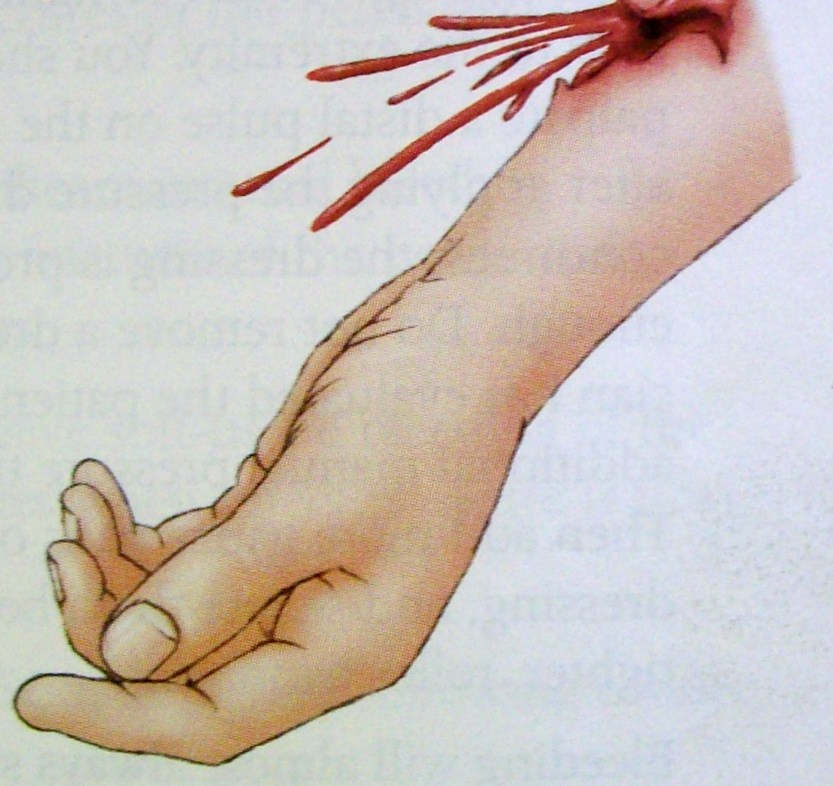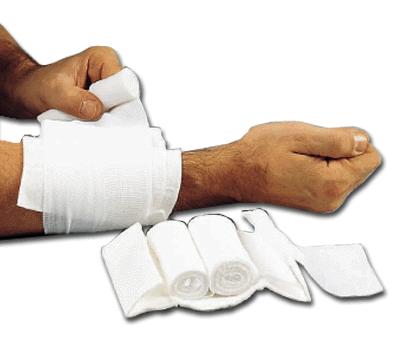Cards In This Set
| Front | Back |
|
Perfusion
|
The supply of oxygen to and removal of wastes from the cells and tissues of the body as a resault of the flow of blood through the capillaries.
|
|
Hypoperfusion
|
Inability of the body to adequately circulate blood to the body's cells to supply them with oxygen and nutrients. (see shock)
|
|
Shock
|
(also known as hypoperfusion)Inability of the body to adequately circulate blood to the body's cells to supply them with oxygenand nutrients.LIFE-THREATENING CONDITION!
|
|
Hemorrhage
|
Bleeding, Especially sever bleeding.
|
|
Arterial Bleeding
|
 Bleeding from an artery, which is characterized by bright red blood and as rapid, profuse, and difficult to control. |
|
Venous Bleeding
|
 Bleeding from a vein, which is characterized by dark red blood or maroon blood as a steady flow, easy to control. |
|
Cappillary Bleeding
|
Bleeding from cappilaries, which is characterized by a slow, oozing flow of blood.
|
|
Pressure Dressing
|
 A bulky dressing held in position with a tightly wrapped bandage to apply pressure to help control bleeding. |
|
Tourniquet
|
A device use for bleeding control that constricts all blood flow to and from an extremity.
|
|
Pressure Point
|
A site where a main artery lies near the surface of the body and directly over a bone. Pressureon such a point can stop distal bleeding.
|
|
Brachial Artery
|
The major artery of the upper arm.(Mostly used to check babies pulse)
|
|
Femoral Artery
|
The major artery supplying the thigh
|
|
Compensated Shock
|
When the patient is developing shock, but the body is still ableto maintain perfusion.(See Shock)
|
|
Hypovolemic Shock
|
Shock resulting from blood or fluid loss.
|
|
Hemmorrhagic Shock
|
Shock resulting from blood loss.
|



